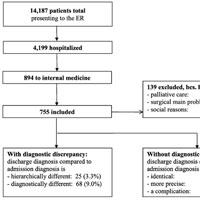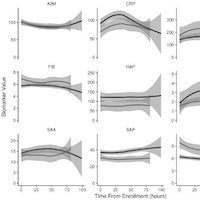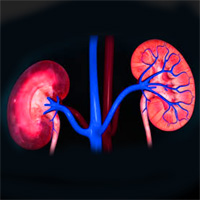Tag: mortality

Optimizing Respiratory Management in Resource-limited Settings
This review focuses on the emerging body of literature regarding the management of acute respiratory failure (ARF) in low- and middle-income countries (LMICs). The aim is to abstract management principles that are of relevance... read more

Describing Organ Dysfunction in the ICU
Multiple organ dysfunction is a common cause of morbidity and mortality in intensive care units (ICUs). Original development of the Sequential Organ Failure Assessment (SOFA) score was not to predict outcome, but to describe... read more

Acute Kidney Injury, Fluid Overload, and Outcomes in Children Supported With ECMO for a Respiratory Indication
This study seeks to evaluate the association between acute kidney injury (AKI), fluid overload (FO), and mortality in children supported with extracorporeal membrane oxygenation (ECMO) for refractory respiratory failure.... read more

Diagnostic error increases mortality and length of hospital stay in patients presenting through the emergency room
Diagnostic errors occur frequently, especially in the emergency room. Estimates about the consequences of diagnostic error vary widely and little is known about the factors predicting error. Our objectives thus was to determine... read more

Relationship of at Admission Lactate, Unmeasured Anions, and Chloride to the Outcome of Critically Ill Patients
Four thousand nine hundred one patients were admitted throughout the study period; 1,609 met criteria for metabolic acidosis and 145 had normal acid-base values. The association between at admission lactate, unmeasured anions,... read more

Combined Biomarkers Predict Acute Mortality Among Critically Ill Patients With Suspected Sepsis
Combined biomarkers predict risk for 14-day and total mortality among subjects with suspected sepsis. Serum amyloid P and tissue plasminogen activator demonstrated the best discriminatory ability in this cohort. Fourteen-day... read more

ED Door-to-Antibiotic Time and Long-term Mortality in Sepsis
Delays in ED antibiotic initiation time are associated with clinically important increases in long-term, risk-adjusted sepsis mortality. This study investigated the association of door-to-antibiotic time with long-term mortality... read more

PERFECT Protocol: Volume-based Feeding in Ventilated Adults
Underfeeding in critical illness is common and associated with poor outcomes. Researchers in the UK designed a before-and-after study to evaluate the safety, efficacy and clinical outcomes associated with volume-based feeding... read more

Sedation in ICU patients – Need for Standardized Protocols
A Johns Hopkins-led study on sedation practices in critically ill patients in a resource-limited setting finds that deep sedation, agitation, and benzodiazepines were independently associated with worse clinical outcomes.... read more

Immunotherapy Effects on Sepsis
A randomised controlled multicentre trial assessed for the first time the safety and pharmacokinetics of an antiprogrammed cell death-ligand 1 (anti–PD-L1) immune checkpoint inhibitor (BMS-936559; Bristol-Myers Squibb,... read more

ECMO Use in Cardiogenic Shock
Increasing age is a well-recognized risk factor for in-hospital mortality in patients receiving extracorporeal membrane oxygenation (ECMO) for cardiogenic shock, but the shape of this relationship is unknown. Age is linearly... read more

High-flow Oxygen Through Nasal Cannula in Acute Hypoxemic Respiratory Failure
In patients with nonhypercapnic acute hypoxemic respiratory failure, treatment with high-flow oxygen, standard oxygen, or noninvasive ventilation did not result in significantly different intubation rates. There was a significant... read more

Teaching the Principles of Pediatric Critical Care to Non-Intensivists in Resource Limited Settings
It is a dismal reality of global health that the vast majority of critically ill or injured children are found in regions of the world least equipped to care for them. Most of these severely ill or injured children are cared... read more

Hospital Variation in RRT for Sepsis in the United States
Use of renal replacement therapy (RRT) in sepsis varied widely among nationally sampled hospitals without associated differences in mortality. Improving renal replacement standards for the initiation of therapy for sepsis... read more








